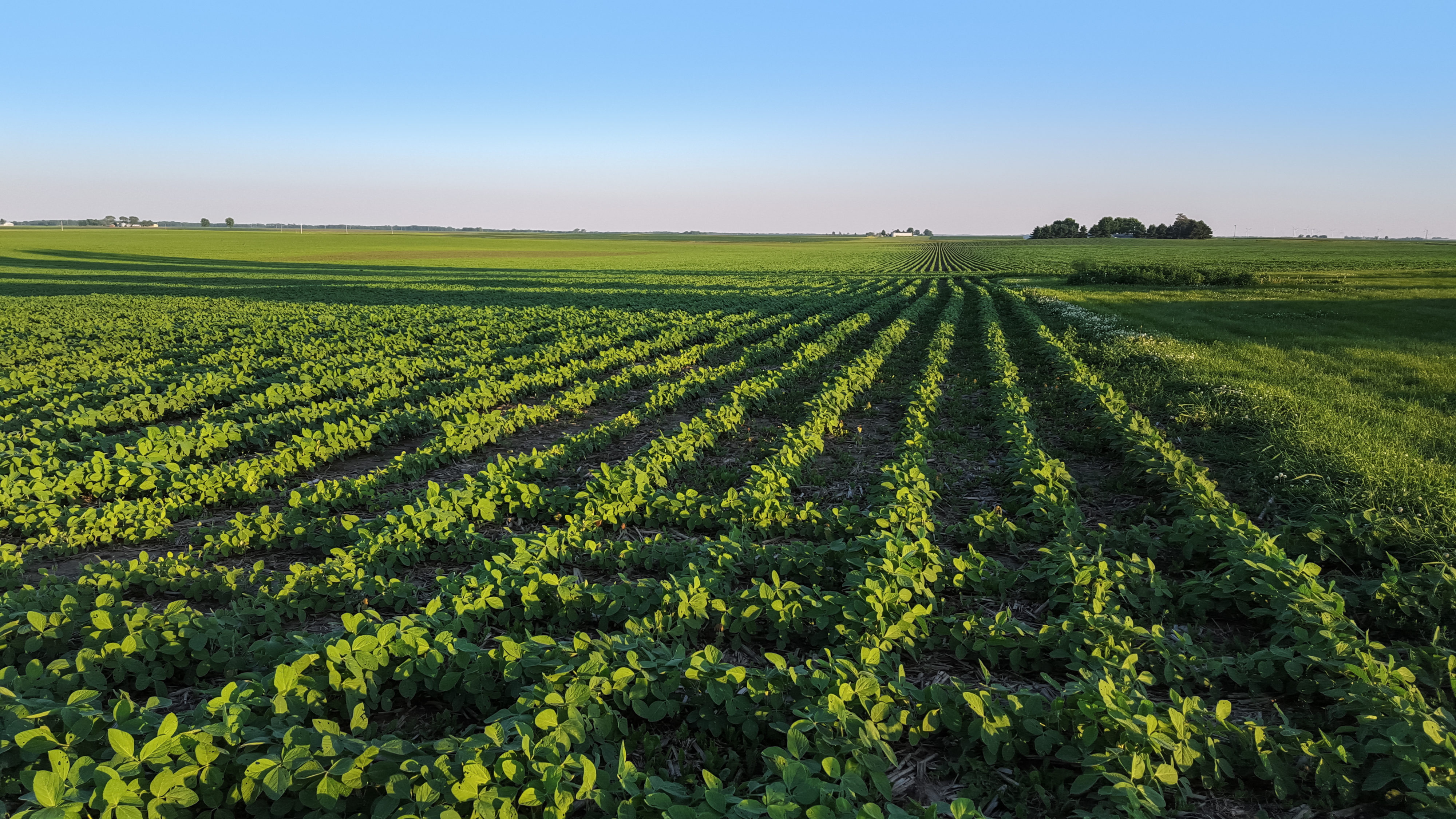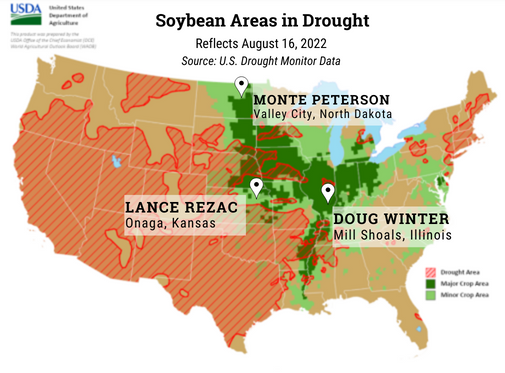
By Laura Temple, Communications Consultant, USSEC
As of mid-August, the United States shows potential to produce another large — perhaps even record-setting — soybean crop in 2022. Mac Marshall, vice president of market intelligence for the U.S. Soybean Export Council (USSEC) and the United Soybean Board, explained that U.S. soybean yields have been showing an upward trend despite challenging weather conditions.
“We produced a record soybean crop in 2021, according to USDA data, and we have the potential to do that again this year,” he told Soy Connext attendees in San Diego, California, on August 23. “U.S. Soy is proving to be the reliable supplier of choice for whole soybeans, soybean meal and soybean oil.”

Although large portions of the U.S. have been experiencing drought conditions, Marshall noted that those regions do not overlap heavily with major soybean-producing areas of the country.
“Our diverse geography for soybean production allows the U.S. as a whole to reliably produce soybeans,” Marshall said. “U.S. farmers take advantage of advances in genetics and technology to continuously improve.”
Marshall was joined by three farmers from different areas of the U.S. who shared their soybean crop outlook. Despite experiencing diverse weather challenges, they are optimistic about 2022 yield potential as of mid-August.
- Monte Peterson farms near Valley City, North Dakota, in the U.S. Northern Plains. A very wet spring delayed soybean planting a couple months. However, he said his crops look good despite the very late start, thanks to good growing conditions throughout the summer.
- Kansas farmer Lance Rezac said his farm near Onaga has experienced the edge of drought conditions for three years. However, his soybeans look good this year. He notes that soybeans are incredibly tough and resilient. With just a little moisture, he has seen his soybeans recover from very stressful conditions.
- On the opposite end of the weather spectrum, USSEC Chairman Doug Winter, who farms near Mill Shoals, Illinois, received between 24 and 28 cm, or 9 and 11 inches, of rain during the two weeks prior to Soy Connext. Due to flooding, some areas of his fields are under water. He expects to lose 5% to 6% of his soybean crop, but the rest of the crop is doing so well that he believes yields will still be in line with his five-year average.
Peterson, Rezac and Winter also explained how soybeans support sustainability and soil health. They rely on technology to improve their farms each year. And they are already planning and purchasing inputs for their 2023 crop.
“Three or four months ago, we would not have expected the soybean crop to show as much potential as it is now,” Marshall said. “While we can’t predict weather conditions for the rest of the season, we are optimistic that the U.S. crop will help meet global needs.”
This article is partially funded by U.S. Soy farmers, their checkoff and the soy value chain.
